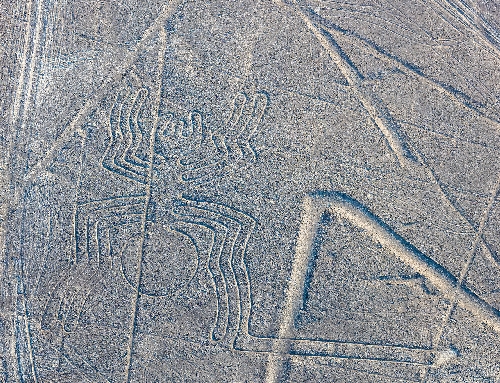University News
Creation of Archaeological Project Rescheduled for April 22
April 3, 2017
MACOMB, IL – A unique spring semester class in anthropology at Western Illinois University will culminate in the creation of an experimental archaeological project on the Macomb campus. The date of the project construction has been changed to Saturday, April 22.
WIU Associate Professor Patricia Anderson is teaching the innovative new course, "Fantastic Archaeology: Ancient Astronauts, Shape Shifters and Bigfoot" for general education credit. The class will create a "geoglyph," a large design executed on the surface of the earth by moving soil, rocks or vegetation. A number of different cultures worldwide are known to make geoglyphs, but the most famous are the Nazca Lines of Peru, which are attributed to the Nazca culture (1,500-2,000 years ago).
Anderson said "fringe archaeologists" alternatively claim that the geoglyphs are the work of extraterrestrials. Her Anthropology 215 class is helping students examine alternate interpretations of the human past as a way to explore the nature of knowledge, develop critical thinking skills and to learn how anthropological and archaeological theory and methods can be used to distinguish between science and pseudoscience.
The 20 students in the class have spent the semester learning about what questions to ask in assessing fringe or alternate interpretations of the human past in order to differentiate between scientific-based explanations and those lacking a scientific basis. In one of the course assignments, students will be asked to consider if it would be possible for the Nazca Lines to have been made by the Nazca people, based on the technologies that were available to them at the time. This exercise will encourage students to think, plan and work together as a team to execute a geoglyph on the WIU campus.
A winning design will be chosen and created on Currens Field, north of Currens Hall. The geoglyph will be two-three acres or less.
"I'm very excited to be teaching this new course for the first time," said Anderson. "A major goal of the course is to dispel misunderstandings about the abilities and achievements of past human cultures. Unfortunately, there is a tendency to misjudge people of past cultures as more primitive than current people.
Anderson said the specific purpose of this exercise is to give students "hands-on" experience to demonstrate how people in the past were fully capable of planning and making amazing designs and constructions without the assistance of beings from other planets.
"It's a meaningful way to connect the students to the past and to teach a greater understanding and appreciation of the accomplishments of past civilizations," she said.
Once the design is completed, GIS Center Director Chad Sperry will fly a drone over the site to preserve an image of the design.
For more information on the course, contact Anderson at PK-Anderson@wiu.edu.
Posted By: Jodi Pospeschil (JK-Pospeschil@wiu.edu)
Office of University Communications & Marketing


Connect with us: